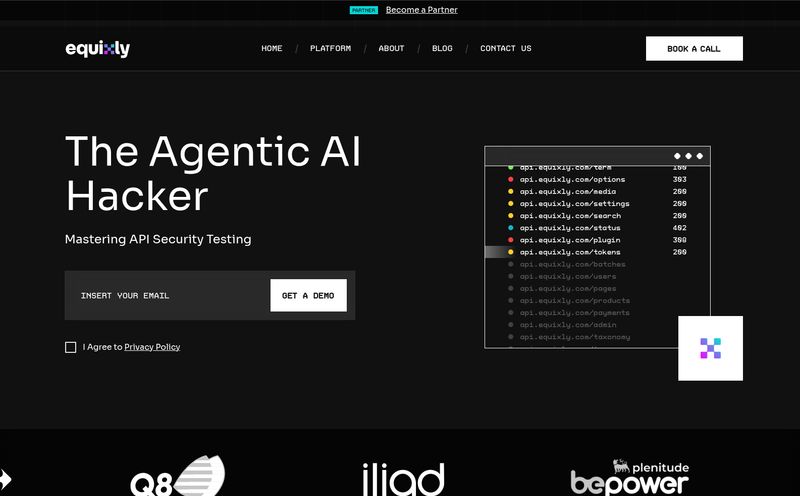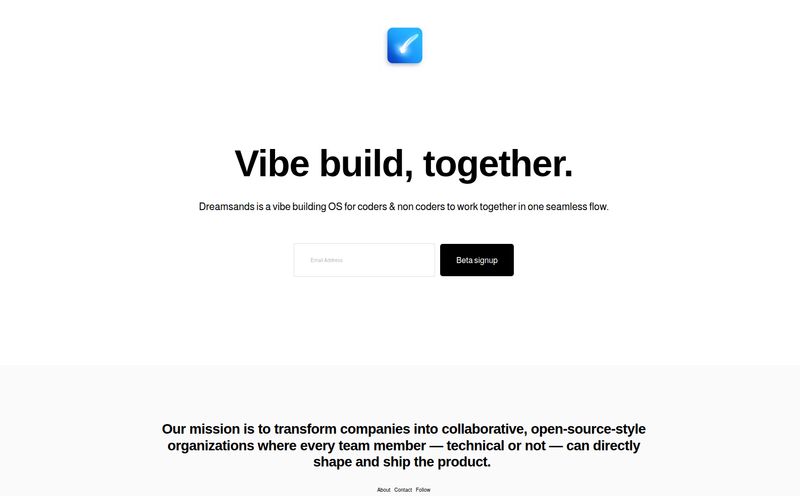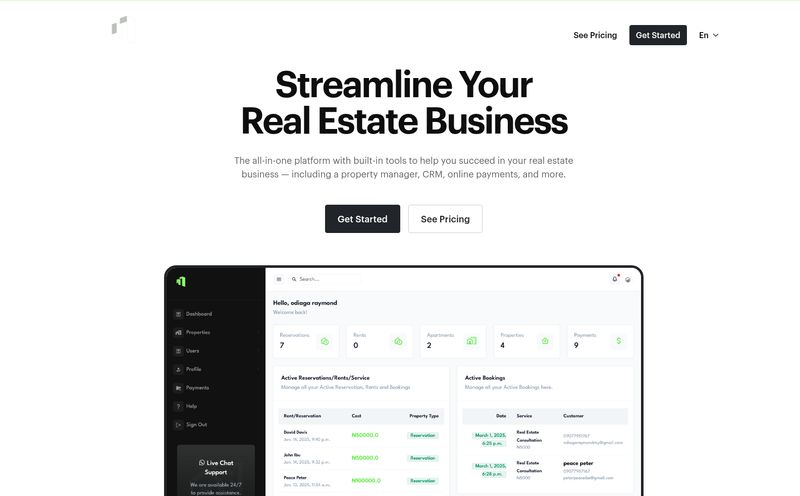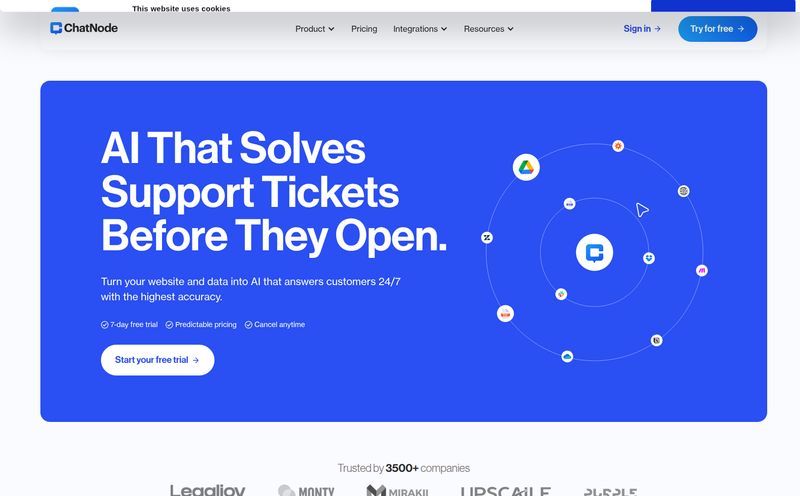We've ridden the rollercoaster of 'The Great Resignation', we're constantly battling skills gaps that appear out of nowhere, and every CHRO I talk to is trying to figure out how to build a team that won't just survive the next market shift, but actually thrive in it. We're buried in resumes, drowning in data we don't know how to use, and often, we’re just guessing.
I’ve been in the SEO and traffic generation game for a long time, and I've seen countless platforms promise to be the magic bullet for business growth. Most are just repackaged old ideas. So when I came across INOP and its pitch of an "AI-powered workforce solution," my skepticism meter was twitching. But then I looked closer, and... well, it got interesting.
So, What Exactly is INOP?
Forget what you think you know about HR software. INOP isn't just another applicant tracking system (ATS) or a fancier version of LinkedIn. From what I can gather, it positions itself as a market intelligence platform for your people. It’s designed to help you build a sustainable, future-ready team by looking at the whole picture—not just a list of past job titles on a CV.
Think of it this way: for years, many of us have been navigating our hiring and workforce planning with a crumpled paper map. INOP is trying to be the Waze for your HR department. It’s not just showing you the map; it’s giving you real-time data on traffic (market trends), road closures (skills gaps), and even the best, most scenic routes (candidates who align with your company's core values). It’s about making smarter, more informed turns instead of just hoping you end up at the right destination.
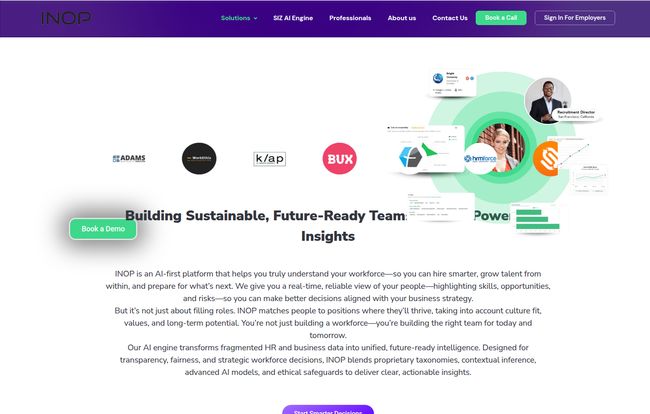
Visit INOP
The Features That Actually Matter
Any platform can throw a bunch of features on a landing page. I’m more interested in what actually moves the needle. After digging into what INOP offers, a few things stood out to me as genuinely different and, more importantly, useful in today's climate.
AI Talent Screening That Sees Beyond the Resume
We've all been there. You hire someone who looks perfect on paper, but a few months in, you realize they’re just not a good fit for the company culture. It's a costly mistake. INOP’s AI-powered screening claims to go deeper than just keyword matching. It looks for indicators of a candidate's potential, their alignment with your company’s values, and their overall cultural fit. The goal is to reduce the 'gut feeling' hires and replace them with data-backed decisions. This could be massive for improving retention and cutting down on hiring bias, which is something every company should be focused on.
Finally, a Real Tool for Pay Equity
Pay transparency and equity are not just buzzwords anymore; they are foundational to a healthy workplace. States are passing laws, and employees are demanding fairness. INOP’s Compensation Analytics is probably one of its most powerful features. It gives you the data to benchmark salaries competitively and, crucially, internally. It helps you answer the question, "Are we paying our people fairly?" with actual evidence. In my experience, fixing pay gaps isn't just good ethics, it's a non-negotiable for building a strong employer brand.
Planning Your Workforce for Tomorrow, Not Yesterday
I constantly hear businesses complaining that they can't find people with the right skills. The problem is, many are only looking at the skills they need right now. INOP's Strategic Workforce Planning and Skills Gap Analytics is built to be proactive. It helps you map out the skills you currently have across your organization and compare them against the skills you're going to need in one, three, or five years. It’s the difference between seeing an obstacle in the road ahead and having time to change lanes, versus slamming on the brakes at the last second.
The ESG Angle: Your Secret Weapon for Employer Branding
Here’s the feature that really caught my eye. INOP integrates company ESG (Environmental, Social, and Governance) and reputational data into its platform. Why does this matter for hiring? Because modern candidates, especially Gen Z and millennials, don't just want a paycheck. They want to work for a company that stands for something. By helping you match with professionals who share your company's values and highlighting your ESG strengths, INOP turns your corporate responsibility into a powerful recruiting tool. It’s a very smart play.
The Real Talk: What Works and What Might Not
Look, no tool is a perfect utopia. As an analyst, I always look at both sides of the coin. While INOP has some seriously impressive capabilities, there are practical considerations to keep in mind.
| The Good Stuff (Pros) | Potential Hurdles (Cons) |
|---|---|
| AI-driven insights for genuinely smarter hiring. | May require some effort to integrate with your existing HR systems. |
| Powerful analytics to actually achieve pay equity. | The insights are only as good as the data you feed it (garbage in, garbage out). |
| Proactive skills gap analysis to future-proof your team. | Likely a learning curve for your team to get the most out of the platform. |
| Unique focus on ESG and values for attracting top talent. | Seems geared for larger orgs, may be overkill for very small businesses. |
These cons aren't deal-breakers, but they are realities. You can't just plug in a tool like this and expect magic. It requires a commitment to good data hygiene and a willingness to train your people on a new way of thinking about talent.
Who Should Be Booking a Demo?
Based on its feature set, INOP isn't for the 5-person startup trying to hire its first salesperson. This is an enterprise-grade solution. I see this being a perfect fit for forward-thinking CHROs, Heads of Talent Acquisition, and VPs of People at mid-to-large sized companies. If you're leading an HR department that is still stuck in a reactive cycle of posting jobs and praying, and you want to shift to a strategic, data-informed function, then yes, you should probably be hitting that "Book a Call" button.
The Million-Dollar Question: INOP Pricing
Ah, the part you were all scrolling for. If you went to their site, you noticed a distinct lack of a pricing page. Instead, you're greeted with "Book a Call." In the B2B SaaS world, this almost always means one thing: custom, enterprise-level pricing.
Don't let that scare you off. It makes sense for a platform this comprehensive. The cost will likely depend on factors like your company size, the specific modules you need (Talent Screening, Compensation, etc.), and the level of integration required. My advice? Go into that call prepared. Know your pain points, have a clear idea of what you want to achieve, and be ready to ask tough questions. This isn't like buying a Mailchimp subscription; it's a strategic investment.
Your Questions About INOP, Answered
Frequently Asked Questions
How is INOP different from LinkedIn or our current HR software?
Think of it as an intelligence layer on top. While LinkedIn is a massive network and your ATS manages applicants, INOP is designed to provide deeper strategic insights about the market, your existing workforce, and potential candidates based on skills, values, and pay equity, not just profiles.
Is the AI-driven screening process biased?
This is a huge concern with AI in HR. While no system is perfect, platforms like INOP are specifically designed to reduce human bias by focusing on objective data points like skills, potential, and value alignment rather than subjective factors like a person's name, age, or background that can unconsciously influence recruiters.
Do we need a data scientist to use INOP?
Probably not. These platforms are built for HR professionals, not data scientists. The whole point is to take complex data and present it through user-friendly dashboards and actionable recommendations. However, having a data-curious team will certainly help you get the most out of it.
Can INOP integrate with our current ATS or HRIS?
While the website mentions "Modular Solutions Built for You," it implies integration is possible. This is a critical question to ask during your demo call. A tool that doesn't talk to your existing systems can create more problems than it solves.
Is INOP suitable for small businesses?
In my opinion, its probably best suited for medium to large enterprises. The depth of strategic workforce planning and compensation analytics provides the most value to organizations with a certain level of complexity. A small business with under 50 employees might find it too powerful for their current needs.
My Final Verdict on INOP
After looking at everything, I'm genuinely intrigued by INOP. It's not just another piece of tech; it feels like it's built on a modern philosophy of what a company should be: fair, value-driven, and forward-looking. It’s tackling some of the biggest and most complicated challenges in human resources today—pay equity, skills gaps, and value-based hiring.
Is it a magic wand? No. Its success in your organization will depend on your commitment to using it properly. But for any HR leader who is tired of guessing and wants to start building a truly sustainable and future-ready workforce, INOP looks like a very serious contender. It's a tool that could finally help HR shift from a cost center to the strategic architect of the company's future. And that's a pretty exciting thought.
Reference and Sources
- INOP Official Website
- SHRM - How to Practice Pay Equity
- Harvard Business Review - How to Make ESG a Part of Your Talent Strategy
